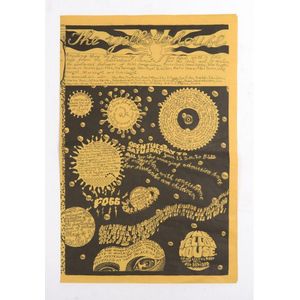Victorian Penwork Box with Floral Inlay
You must be a subscriber, and be logged in to view price and dealer details.
Subscribe Now to view actual auction price for this item
When you subscribe, you have the option of setting the currency in which to display prices to $Au, $US, $NZ or Stg.
- Victorian Period - The Victorian period of furniture and decorative arts design covers the reign of Queen Victoria from 1837 to 1901. There was not one dominant style of furniture in the Victorian period. Designers used and modified many historical styles such as Gothic, Tudor, Elizabethan, English Rococo, Neoclassical and others, although use of some styles, such as English Rococo and Gothic tended to dominate the furniture manufacture of the period.
The Victorian period was preceded by the Regency and William IV periods, and followed by the Edwardian period, named for Edward VII (1841 ? 1910) who was King of the United Kingdom and the British Dominions and Emperor of India for the brief period from 1901 until his death in 1910. - Pen Work - Pen work is a type of decoration on Japanned (black lacquered) furniture and smaller objects that was popular in the late eighteenth and early nineteenth century. The decoration was painted on to the black lacquered surface in white and details and shading was added in black Indian ink, with Oriental scenes popular.
- Circa - A Latin term meaning 'about', often used in the antique trade to give an approximate date for the piece, usually considered to be five years on either side of the circa year. Thus, circa 1900 means the piece was made about 1900, probably between 1895 and 1905. The expression is sometimes abbreviated to c.1900.
- Satinwood - Satinwood is a dense pale gold coloured timber that was imported into Britain in the second half of the 18th century, and early 19th centuries from the East Indies and the West Indies. The name derives from the satin-like surface sheen when the timber is polished.
It was used in the solid, as a veneer and in inlays. As well as furniture, satinwood was used for making musical instruments, barometers, boxes and clocks.
It will usually be found on only the very best quality objects, presumably because of of its cost at the time. - Foliate - Decorated with leaves or leaf-like forms.
This item has been included into following indexes:
Visually similar items

The Yellow House Artist's Collective Exhibition Poster 1951, poster, 39 x 53 cm

A Kazak district rug, southern Caucasus, late 19th century, with a design associated with the village of Karachov, 184 x 242 cm. Provenance: Purchased Denis Croneen Galleries

New Zealand native timbers marquetry box, oblong shape the hinged lid inlaid with native birds and chicks in a landscape

Vintage Chinese painted leather trunk the wooden trunk with stretched leather exterior, decorated with brightly coloured dragons, Buddha and plants, late 19th - 20th century
